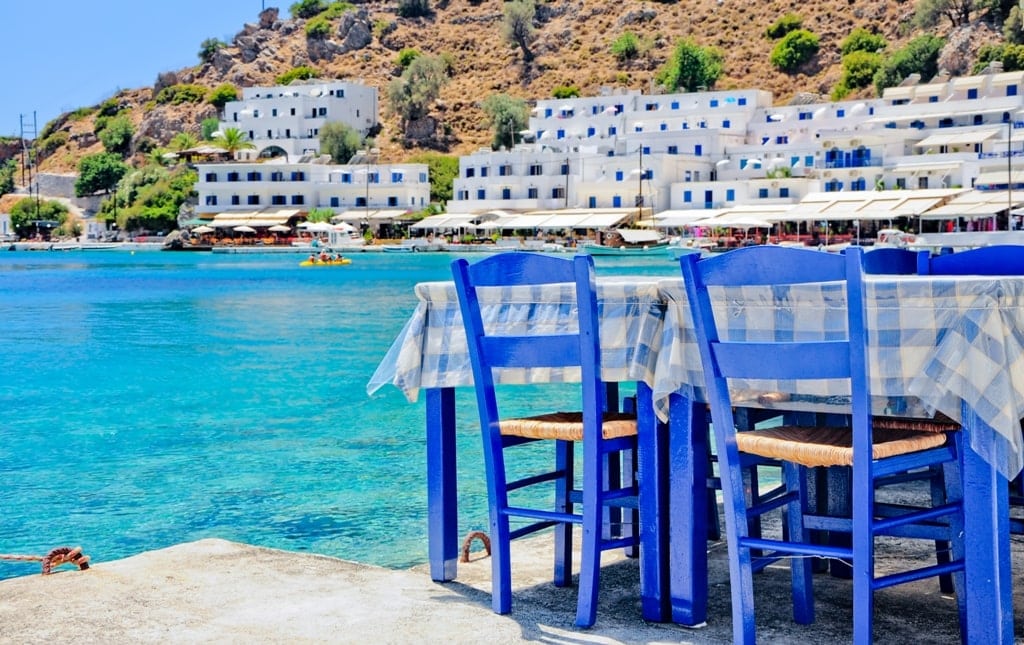If you google the translation of the word “ταβέρνα”, which is how a taverna is written in Greek, you will see that it is not readily matched with the word ‘restaurant’. You get ‘tavern’ and ‘eating house’ instead.
That’s because tavernas are like restaurants but are not restaurants: they are a different category of eatery altogether, with a culture and atmosphere that is specific only to them. When you go to a taverna, there are things to expect you won’t in a restaurant, and privileges you have that you won’t in a restaurant because the relationship customers have with the staff are vastly different.
Just like so many things in Greece, you must experience eating at a taverna to know what it’s like. Because a taverna is its own cultural thing, there are scripts and procedures that are followed which are unique. Keep in mind that the more a taverna resembles a restaurant, the more likely it is to be touristy and less authentic.
As always, it’s best done if you go with a local who will introduce you to it all, but here is a good guide for doing it on your own as well!
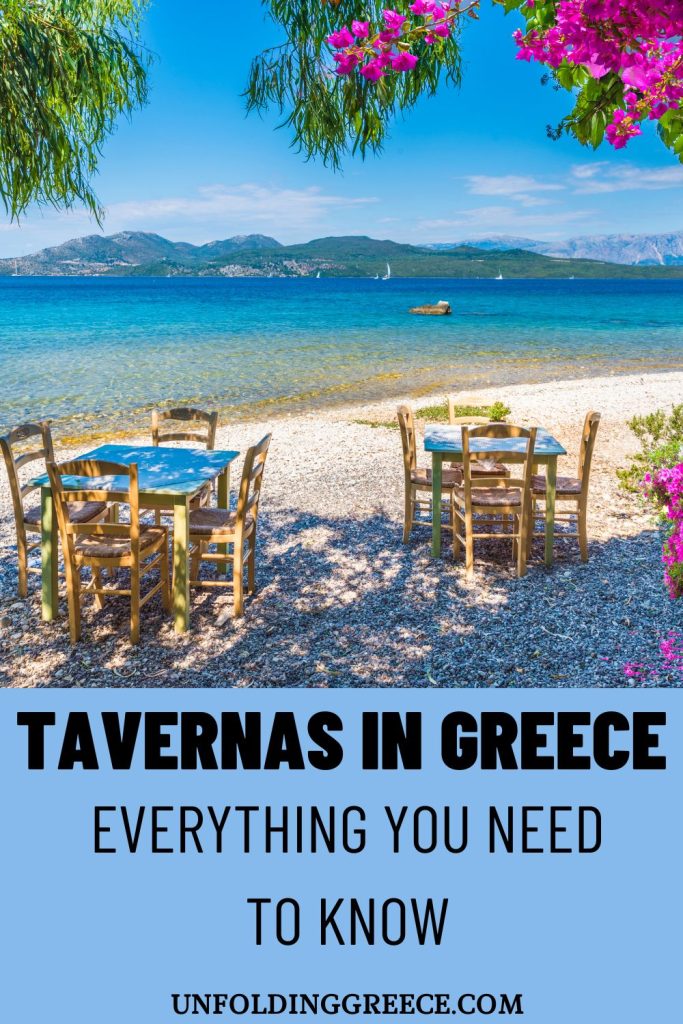
How to Experience the Tavernas in Greece
1. The paper tablecloth
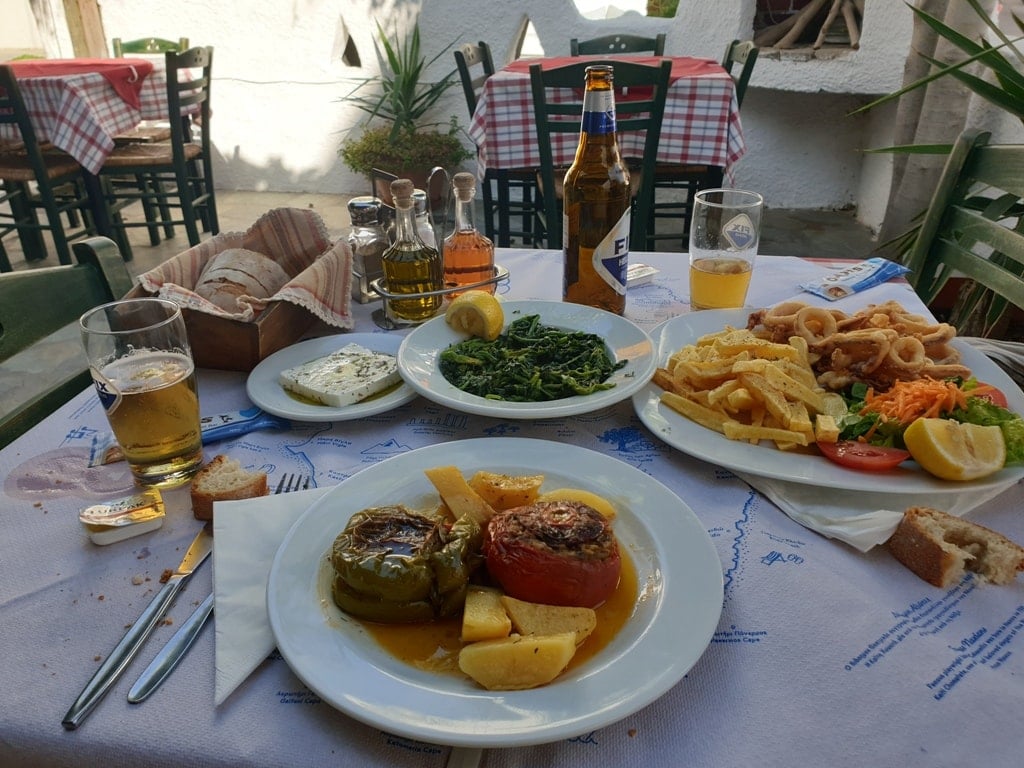
Whether the tables are outside in the outdoors or inside (often depending on the season), tavernas have a ubiquitous trademark: the paper tablecloth.
The tables will have cloth tablecloths sometimes, but you never get to eat on them. A paper, waterproof, disposable tablecloth is what gets set overall, and comes together with the plates and cutlery.
The paper tablecloth is often printed with the taverna’s logo, but at times, if the owner is feeling witty, it may be printed with little messages for the customers, trivia about some of the dishes being offered, or anything else.
The paper tablecloth is often clipped to the table or held fast by a rubber band to prevent wind (or kids) from removing it. When you are done with eating, the waiter will bundle up all the used-up napkins, debris, and other things in it rather than need to clean them off the table top.
2. The waiter is the menu
Though you will often find a menu in a taverna, it’s a token thing that lies around on the table and serves more as a paperweight for the paper tablecloths than anything else. The real menu is the waiter.
In truly traditional places you will find no menu at all. Instead, as soon as you are seated and have your table set, a big tray with servings of various dishes will arrive. You are expected to pick up from the tray whatever you wish as the appetizers. The rest gets whisked away.
In tavernas that have evolved from that stage, the waiter will arrive and will list all the items available for appetizers and main course. Don’t worry- he or she is prepared to list the items as many times as you need if you forget something.
Waiters also will tell you what is freshly cooked, or is especially good for the day, or day specials and the like. Even if you have perused the menu, always listen to what the waiter has to say- not only is he or she truthful to protect the taverna’s brand, many items on the menu just won’t be available, and many that are won’t be on it!
3. Pick your fish
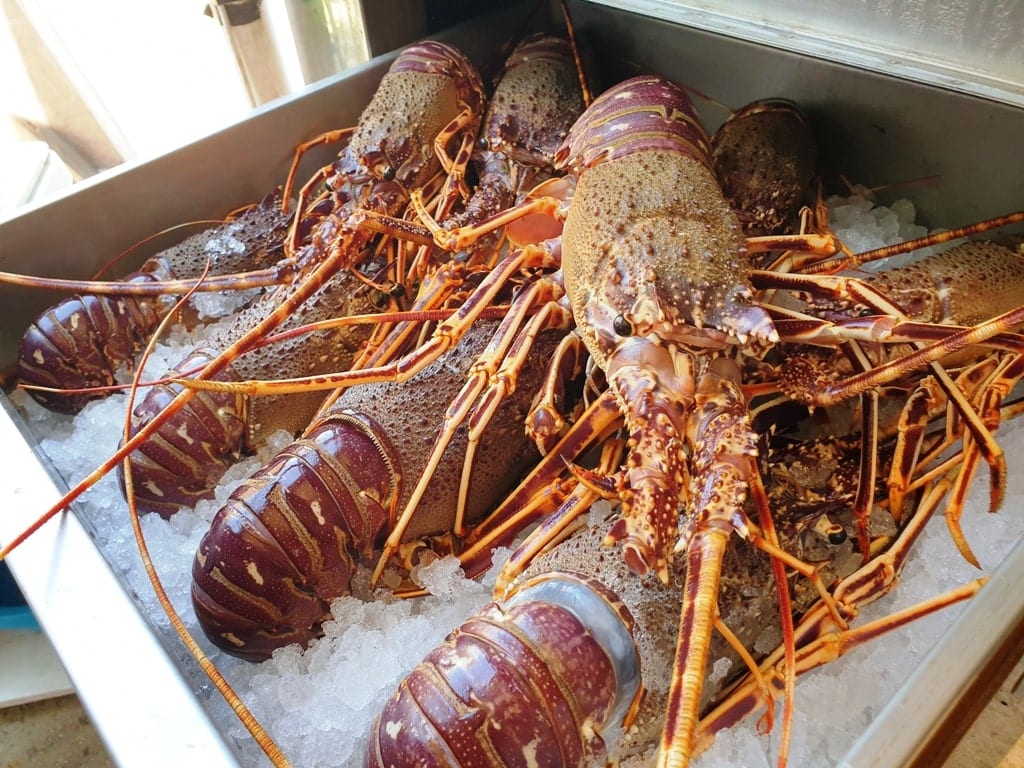
If you are visiting a fish tavern, the waiter will often invite you to go into the back, at the entry of the kitchen, so that you will inspect what fresh fish and seafood they have that day and make your pick.
Not only do they boast of the freshness of their food that way, but you also may get to see what (once again) is not on the menu because it depends solely on what the catch was that day!
Usually when you pick fish, the waiter will assume you know which the manner of cooking is that is considered best- usually grilled or fried. If you’re not sure, ask, because they won’t cook them any other way!
4. You get all of the fish
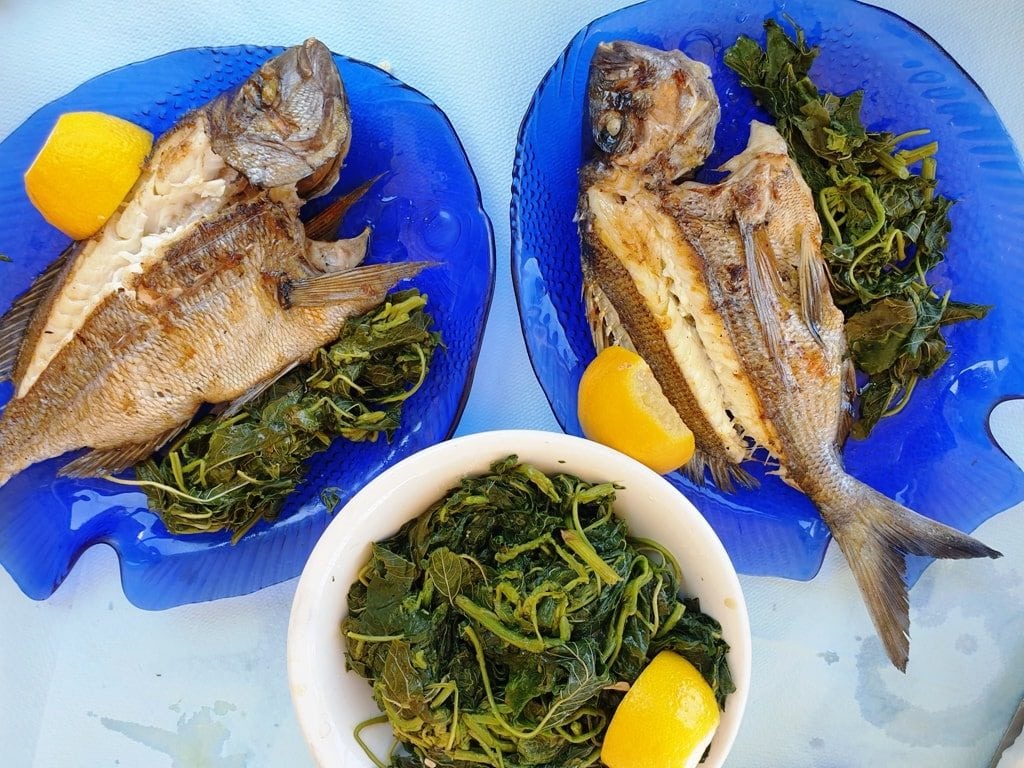
Unless you have picked a type of fish that is big enough to serve in pieces, you will be served the entire fish on the table- and that includes the head!
Greeks eat the entire fish, and in fact, the head is considered a delicacy, which may put you off if you come from a country that tends to serve them headless, so be advised. You are expected to fillet and pick apart your or debone own cooked fish but don’t worry; nobody cares how you do it. Many do it with their fingers.
5. You may set your own table
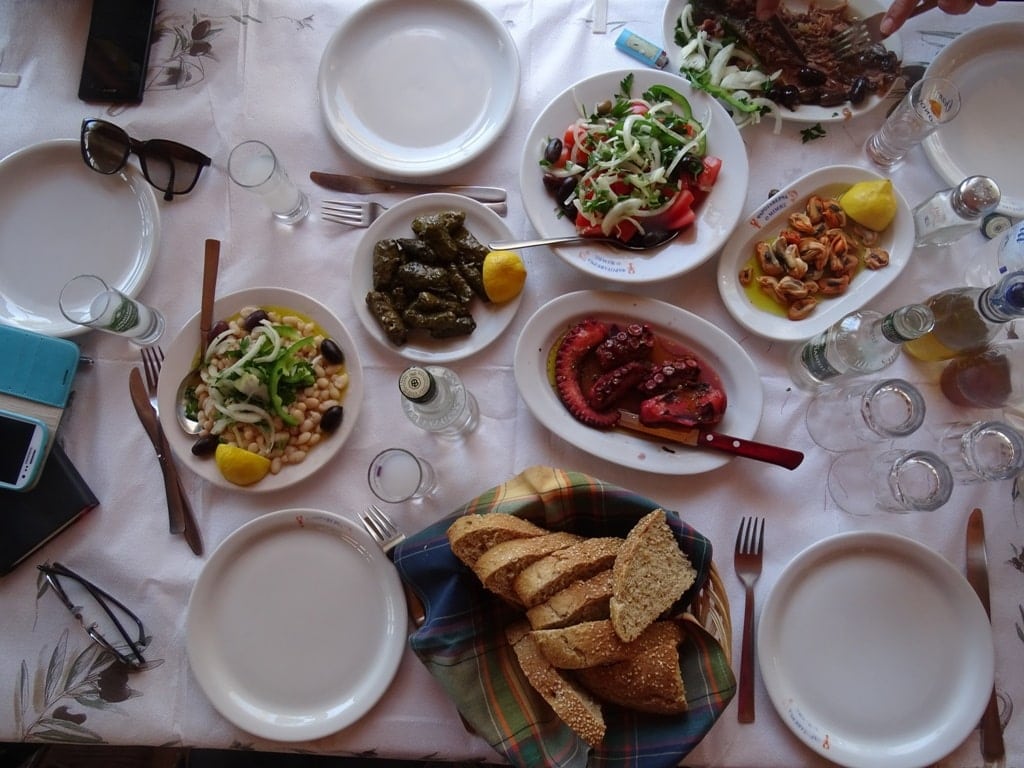
If the taverna is traditional enough, you may get to partially set your own table! While the waiter will set the paper tablecloth and the plates and glasses, the forks and knives come in a bunch, often stuffed in the breadbasket.
This is normal, so don’t be taken aback! Just take the forks and knives and distribute them around, and do the same for the bunch of napkins while you’re at it!
You will also often find the ‘oil and vinegar’ decanters along with the salt and pepper shakers sitting in the middle of the table. That is because you are expected to add seasoning to your food and salad as you like it.
This goes especially for the grilled food!
6. Food is communal
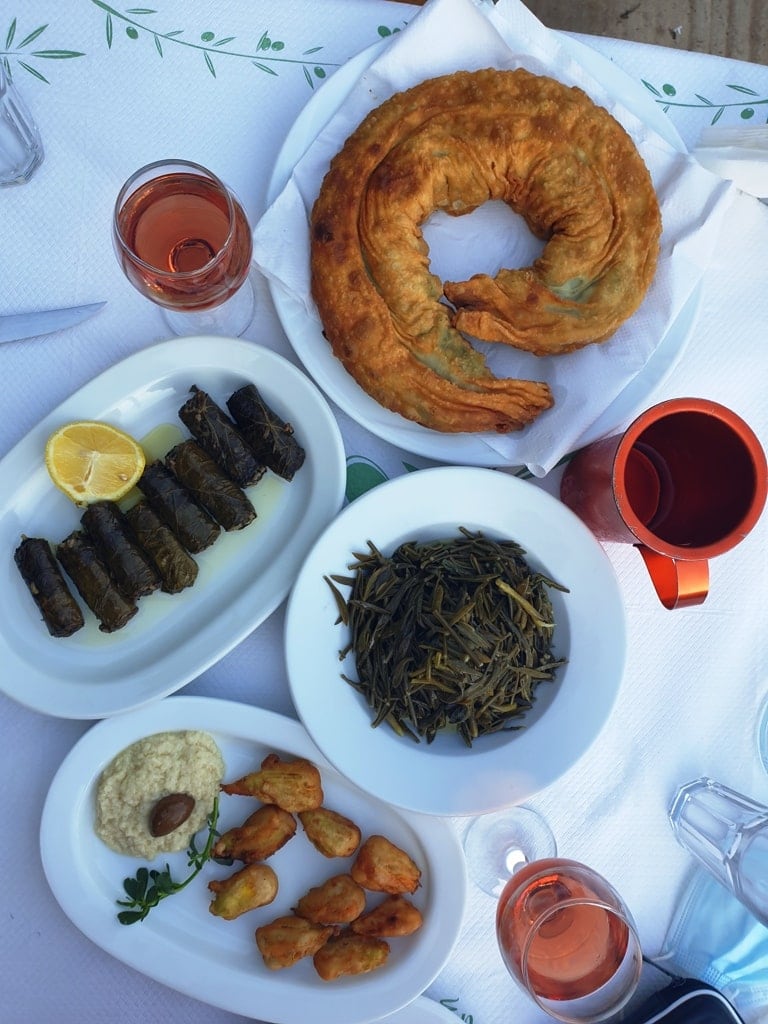
Your appetizers and salads always go in the middle, and everyone dips in. This is the standard way to eat in Greece, and this is the format the taverna follows. You are expected to have your own main course in front of you, but everything else is shared!
It is also expected that you will use the excellent bread (often grilled and doused in olive oil) to dunk into the salad, and so will your tablemates! If you have a problem with that, make sure it’s communicated before the first dishes arrive.
7. Stray cats are unavoidable
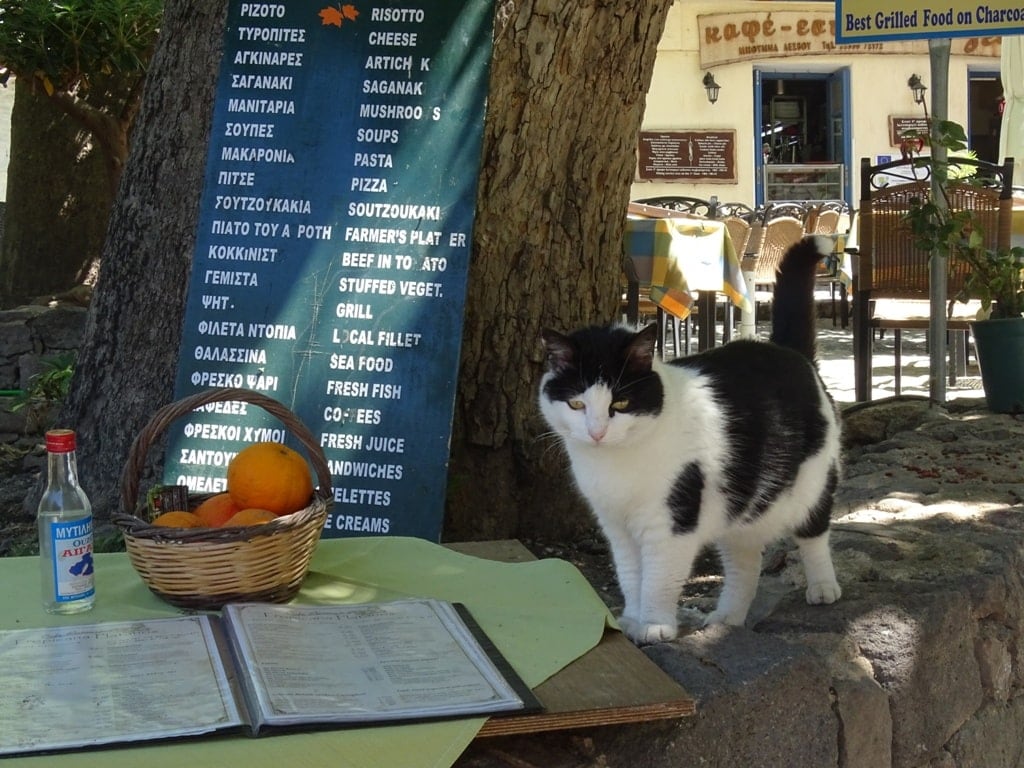
When you are eating in the outdoors, it’s almost a guarantee that cats will come to beg for scraps of food. Especially if it is a fish tavern, you will get more than one.
These cats are mostly strays that get fed off the leftovers, and know to stick around for delectable tidbits. If you don’t like them, the best thing to do is not to feed them or pay them attention. They will migrate to another table that will.
Whatever you do though, enjoy their presence as they are often part of the general experience!
8. Fruit comes for free
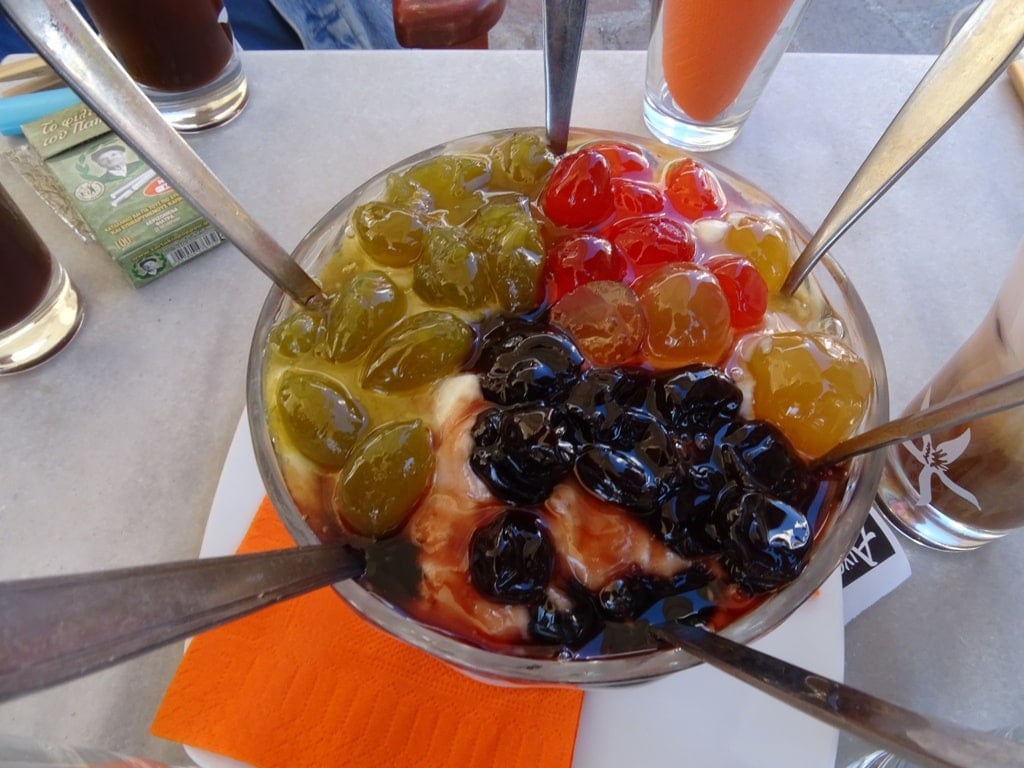
Tavernas often don’t really have a dessert catalogue. You get whatever fruit is available that day, and often for free just after your main course dishes are cleared.
If there is no fruit, there is traditional dessert, with the most frequent being yoghurt with honey and walnuts or baklava.
A shot of alcohol, usually raki or some kind of local liquor might also be what you get together with the bill.
As tavernas evolve, the tradition may not be followed, especially if there is a catalogue for desserts, but usually you will get some kind of treat on the house.
9. The men grill, the women cook
Often in a traditional taverna, you will find it is family-run, with the men (usually the dad) being the one who grills the meat and fish and the women doing all other types of cooking. Bonus points if they feature casseroles and other complicated dishes cooked by the family grandma (the yiayia)- if there is one, have whatever she made that day. It’s almost guaranteed to be awesome!
10. If there is dancing, you get a free lesson
Not all tavernas have live music or a dance floor. If they do, however, you can expect to see various Greek dances. As the eating and the drinking gets more people into their happy place, more dancing will take place with people joining even if they don’t know each other, from all the tables.
When that happens, don’t miss the opportunity to join up too- everyone will be happy to teach you the dance steps so you can follow, and nobody will care if you don’t get it right from the start.
You might also like:
What To Eat In Greece?
Street food to try in Greece
Vegan and Vegetarian Greek Dishes
What is Grece’s National Dish?
Famous Greek Desserts
Greek Drinks You Should Try

